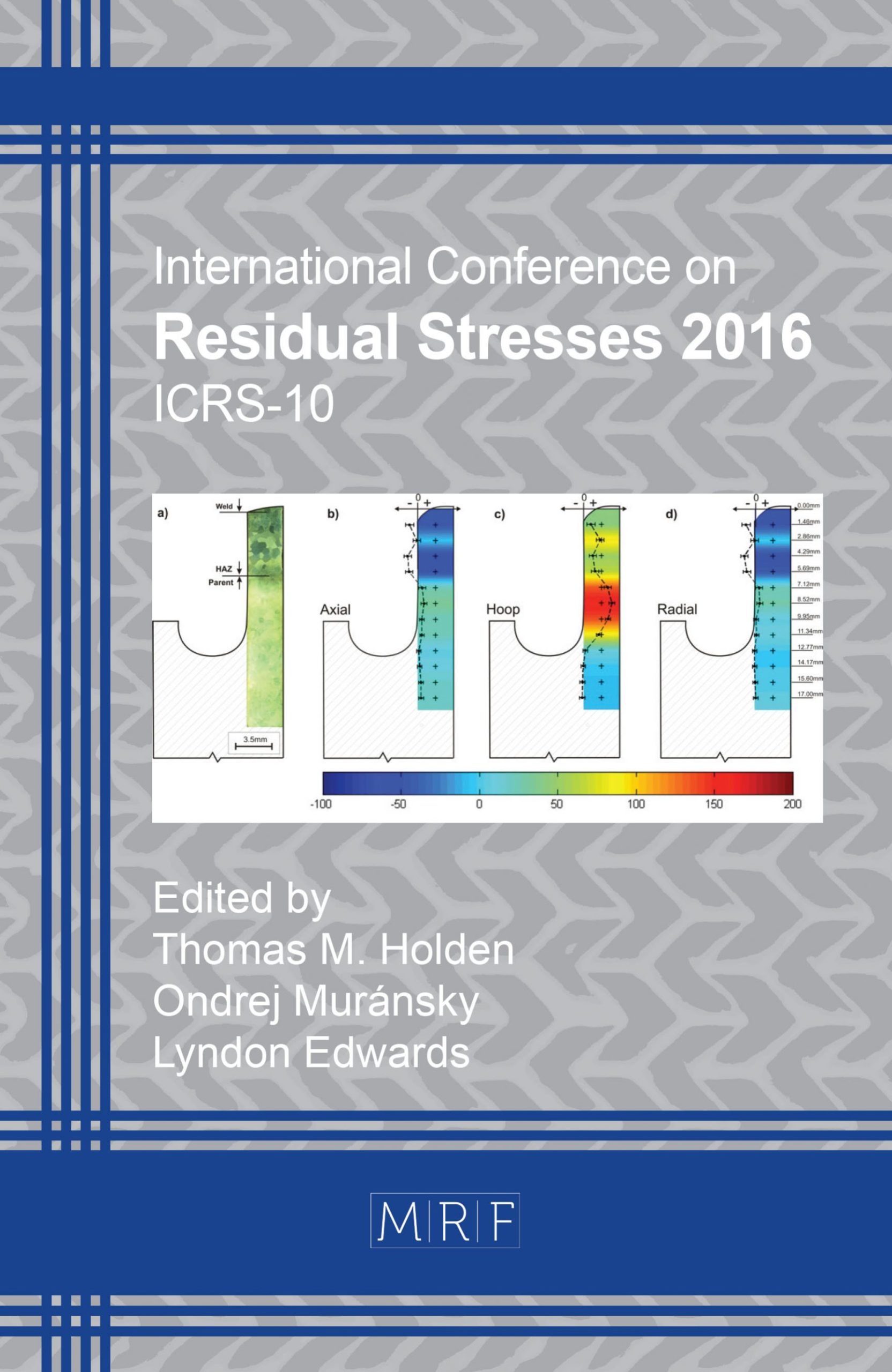Analysis of the Residual Stress in ARMOX 500T Armour Steel and Numerical Study of the Resultant Ballistic Performance
M. Saleh, V. Luzin, M.M. Kariem, D. Ruan
download PDFAbstract. Armour steels and their response to ballistic and blast threats have been dutifully studied in light of increased conflict and advances in protection levels. The strength of these quenched and tempered martensitic steels is a result of micro alloying, Ni Cr, and Mn, a combination of hot and cold rolling of the steel and proprietary heat treatments. The resultant hardness and toughness are pronounced and are reflected in the ballistic performance of the steel, although the role of the residual stress (RS) has not been unambiguously confirmed. To elucidate the effects of the RS on ballistic properties a two-step study was performed. Firstly, stress measurements were carried out on ARMOX 500T on the RS diffractometer KOWARI at ANSTO on a 8.3 mm thick plate. Stress components in rolling and transverse directions were calculated. Using the experimentally measured stress profiles as an input, numerical analysis was carried out on the ballistic response of the plate to the 7.62 mm APM2 round. Since numerical modelling inherently require the evaluation of material properties at elevated strain rates, to gauge the impact driven stress-strain response, the material’s responses were derived using experiments utilising quasi-static testing and instrumented high strain rate experiments using the Split Hopkinson Pressure Bar (SHPB) at Swinburne University, Australia. These experimentally determined high strain rate data were incorporated into the Johnson-Cook (J-C) computational models for the flow stress along with literature sourced parameters for the failure model of the plate. Analysis of the two starting conditions, with and without residual stress, allows the authors to draw some conclusion about the role of the residual stress on the ballistic performance of ARMOX 500T armour steel.
Keywords
Residual Stress, ARMOX, Ballistic, FEA, Johnson-Cook
Published online 12/22/2016, 6 pages
Copyright © 2016 by the author(s)
Published under license by Materials Research Forum LLC., Millersville PA, USA
Citation: M. Saleh, V. Luzin, M.M. Kariem, D. Ruan, ‘Analysis of the Residual Stress in ARMOX 500T Armour Steel and Numerical Study of the Resultant Ballistic Performance’, Materials Research Proceedings, Vol. 2, pp 437-442, 2017
DOI: http://dx.doi.org/10.21741/9781945291173-74
The article was published as article 74 of the book Residual Stresses 2016
![]() Content from this work may be used under the terms of the Creative Commons Attribution 3.0 licence. Any further distribution of this work must maintain attribution to the author(s) and the title of the work, journal citation and DOI.
Content from this work may be used under the terms of the Creative Commons Attribution 3.0 licence. Any further distribution of this work must maintain attribution to the author(s) and the title of the work, journal citation and DOI.
References
1.Showalte, D.D., et al., Ballistic Testing of SSAB Ultra-High-Hardness Steel for Armor Applications, 2008, Army Research Laboratory.
2.Noyan, I.C. and J.B. Cohen, Residual Stress Measurement by Diffraction and Interpretation. 1987, New York: Springer Science+Business Media.
3.Prime, M.B. and R.L. Martineau, Mapping Residual Stresses after Foreign Object Damage Using the Contour Method. Materials Science Forum, 2002. 404-407: p. 521-526.
4.Flores-Johnson, E.A., et al., Numerical analysis of the effect of weld-induced residual stress and plastic damage on the ballistic performance of welded steel plate. Computational Materials Science, 2012. 58: p. 131-139.
5.Flores-Johnson, E.A., M. Saleh, and L. Edwards, Ballistic performance of multi-layered metallic plates impacted by a 7.62-mm APM2 projectile. International Journal of Impact Engineering, 2011. 38(12): p. 1022-1032.
6.Jena, P.K., P. Senthil P, and S.K. K, Effect of tempering time on the ballistic performance of a high strength armour steel. Journal of Applied Research and Technology, 2016. 14(1): p. 47-53.
7.Ponguru Senthil, P., et al., Effect of heat treatment on ballistic performance of an armour steel against long rod projectile. International Journal of Impact Engineering, 2015. 80: p. 13-23.
8.Børvik, T., S. Dey, and A.H. Clausen, Perforation resistance of five different high-strength steel plates subjected to small-arms projectiles. International Journal of Impact Engineering, 2009. 36(7): p. 948-964.
9.Maweja, K. and W. Stumpf, The design of advanced performance high strength low-carbon martensitic armour steels: Microstructural considerations. Materials Science and Engineering: A, 2008. 480(1–2): p. 160-166.
10.Bawa, H.S., Manufacturing Processes – Ii. 2004: McGraw-Hill Education (India) Pvt Limited.
11.Lee, W.-S. and G.-W. Yeh, The plastic deformation behaviour of AISI 4340 alloy steel subjected to high temperature and high strain rate loading conditions. Journal of Materials Processing Technology, 1997. 71(2): p. 224-234.
12.Børvik, T., et al., Strength and ductility of Weldox 460 E steel at high strain rates, elevated temperatures and various stress triaxialities. Engineering Fracture Mechanics, 2005. 72(7): p. 1071-1087.
13.Kaiser, M.A., Advancements in the Split Hopkinson Bar Test, 1998, Virginia Polytechnic Institute and State University.
14.Kirstein, O., V. Luzin, and U. Garbe, The Strain-Scanning Diffractometer Kowari. Neutron News, 2009. 20(4): p. 34-36.
15.Johnson, G.R. and W.H. Cook. A constitutive model and data for metals subjected to large strains, high strain rates and high temperatures. in Proc. 7th Int. Symp. on Ballistics. 1983. The Netherlands.
16.Johnson, G.R. and W.H. Cook, Fracture characteristics of three metals subjected to various strains, strain rates, temperatures and pressures. Engineering Fracture Mechanics, 1985. 21(1): p. 31-48.
17.WIŚNIEWSKI, A. and P. ŻOCHOWSKI, Building and Validation of the Johnson–Cook Constitutive Model of Nano-Composite NANOS-BA® Steel for Armour Applications in 9th International Armament Conference on Scientific Aspects of Armament and Safety Technology2012: Poland.
18.DoD, Department of Defence Test method standard: V50 ballistic test for armor, 1997: USA.































